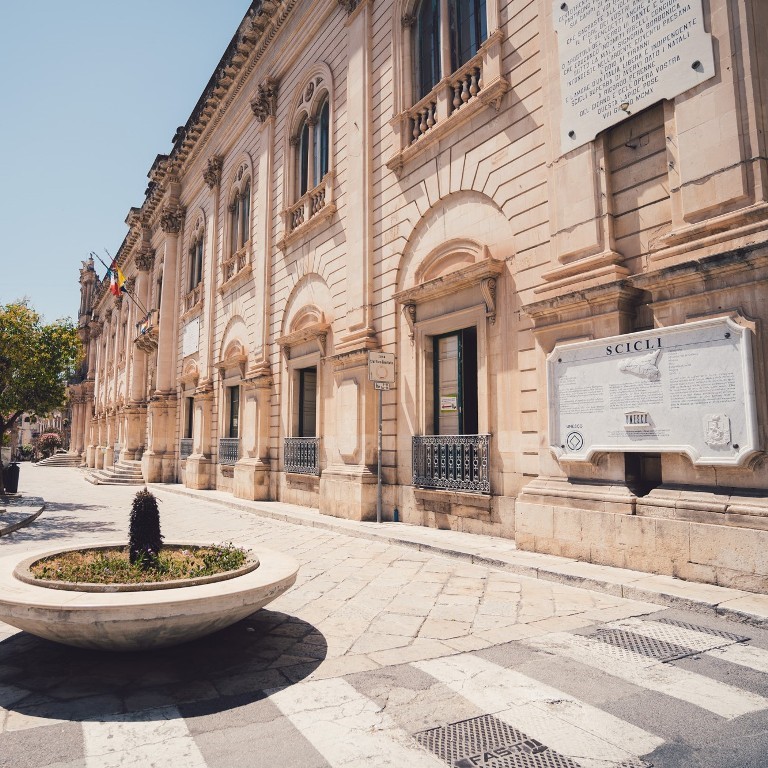Baroque train in Scicli
The history of Scicli
Scicli, a late Baroque city of the Val di Noto, extends over a large plain set within three narrow and recessed valleys called Caves, originating from tectonic fractures and becoming beds of watercourses. Its origins are very ancient and date back to over three thousand years ago. The original name was Siclis, but for all the influences that have occurred over time, the name will be changed to the current one.
In fact, Scicli is the result of Greek, Carthaginian, Roman, Byzantine, Arab and Norman dominations. The original nucleus, that is the heart of the city, extended on the San Matteo hill where it is still possible to see various testimonies today.
The terrible earthquake of 1693 destroyed entire cities of the Val di Noto including Scicli; from those rubble the city rose in late Baroque style and was rebuilt downstream, definitively abandoning the hills on which it was perched.
Today, as in an eighteenth-century fairy tale, splendid churches in golden stone and sumptuous palaces follow one another through the streets of the historic center of Scicli. The light stone creates fascinating plays of light with the sun, in which beauty, amazement and harmony chase each other scenically.
In 2002, Scicli was included in the list of World Heritage Sites along with seven other cities of the Val di Noto. According to Unesco, “via Mormina Penna, due to the rich presence of eighteenth-century buildings, and the Benevento palace represent a masterpiece of the human creative genius of the late Baroque age”.
Among the places of interest that Baroque Train shows you, Palazzo Beneventano was defined as the most beautiful Baroque palace in Sicily, characterized by monumental Baroque masks. At the top stands the crowned coat of arms of the Benevento family decorated with two Moorish heads, now one of the symbols of the city.
The Church of San Matteo, symbol of Scicli and the Mother Church until 1874, is located on the hill of San Matteo, site of the old city. It is the oldest ecclesiastical building in the city; some historians trace its foundation back to the early Christian era.
Set in the hills like a pearl inside a shell, the Church of San Bartolomeo houses a monumental 18th century nativity scene.
The Baroque train will accompany you to the Convent of the Cross, which stands on top of one of the hills overlooking Scicli, which survived the earthquake of 1693 and is now a historic monument open to the public.
The complex, in addition to being very interesting, allows the visit of the monks’ cells and cloisters, with the possibility of accessing panoramic balconies and terraces that allow fabulous views of Scicli: a beautiful view is the one that from the north on the archaeological park of Chiafura, while the views on the south side allow a view as far as the sea. Scicli is also the site of wonderful locations for the “Commissario Montalbano” TV series.
In fact, Baroque Train will present you the Municipal Palace, famous because it was used as the headquarters of the Vigata Commissariat.
It is sufficient to go near the Palace to recognize the places already seen in the scenes of the fiction; in fact, many scenes were shot right in front of the Palazzo and along the street where Inspector Montalbano usually walks with his colleagues, solving cases, getting angry and running towards his “Type”.
Inside the building it is also possible to visit the offices of Commissioner Montalbano.
In Scicli tourism is also linked to religious holidays, such as the one that takes place at the height of Holy Week: on Easter day the Resurrection of Christ called “Man Alive” is celebrated with the cry of “Joy”.
The wooden statue of Christ, an eighteenth-century work attributed to Civiletti and kept in the Church of Santa Maria la Nova, is carried in procession through the streets of the city and made to sway and dance as a sign of joy all day long until late.
During the Christmas period, the historic district of Scicli, San Guglielmo, comes alive with the traditional living nativity scene, immersed in a valley with dense vegetation of prickly pears.
Scicli, a small city whose urban center is certainly among the most interesting in Italy, can be easily visited thanks to the Baroque Train, which offers the curious traveler many precious glimpses that tell its history and culture.
The places of the Tour of Scicli

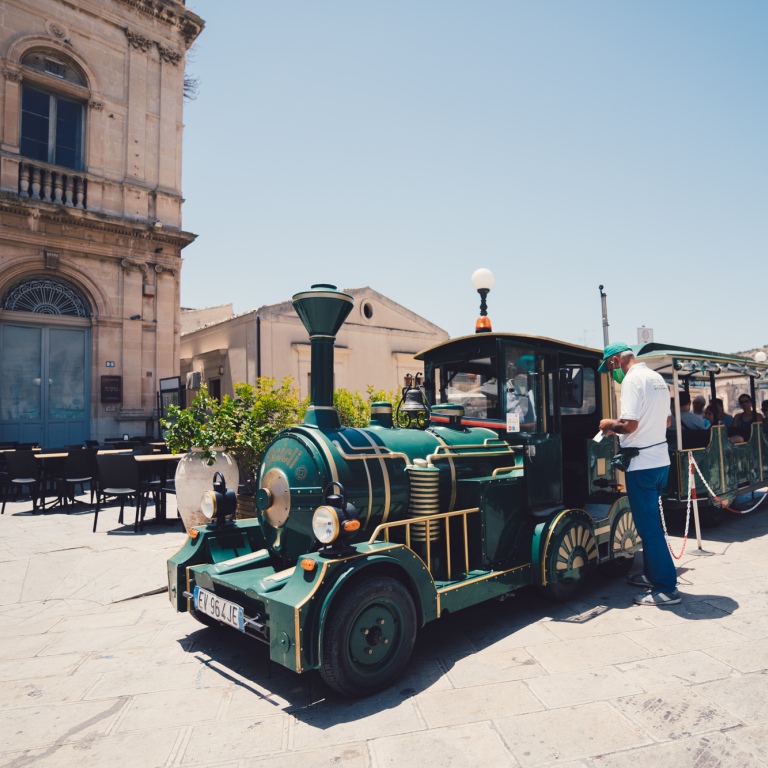
Piazza Busacca
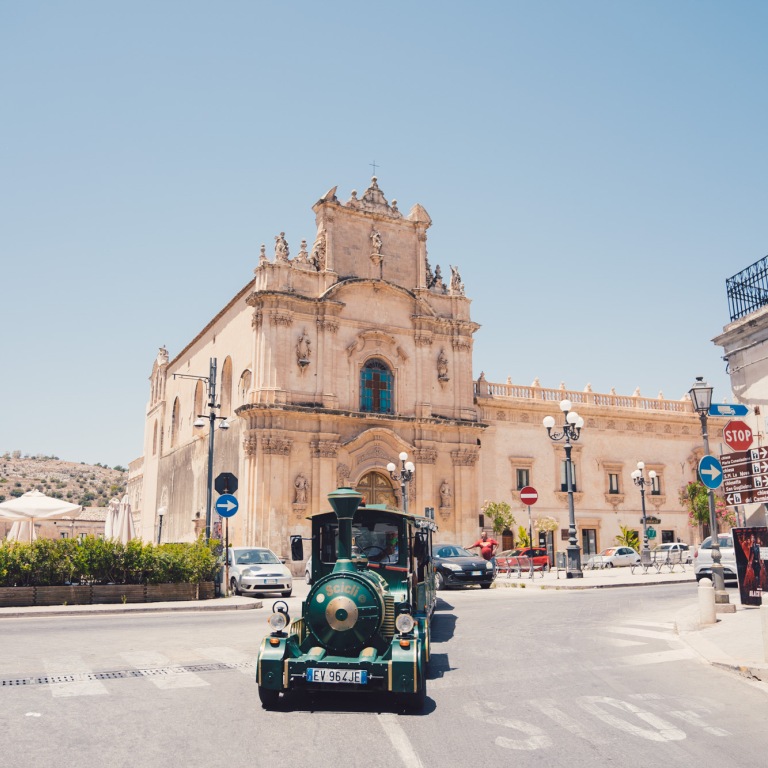
Chiesa del Carmine
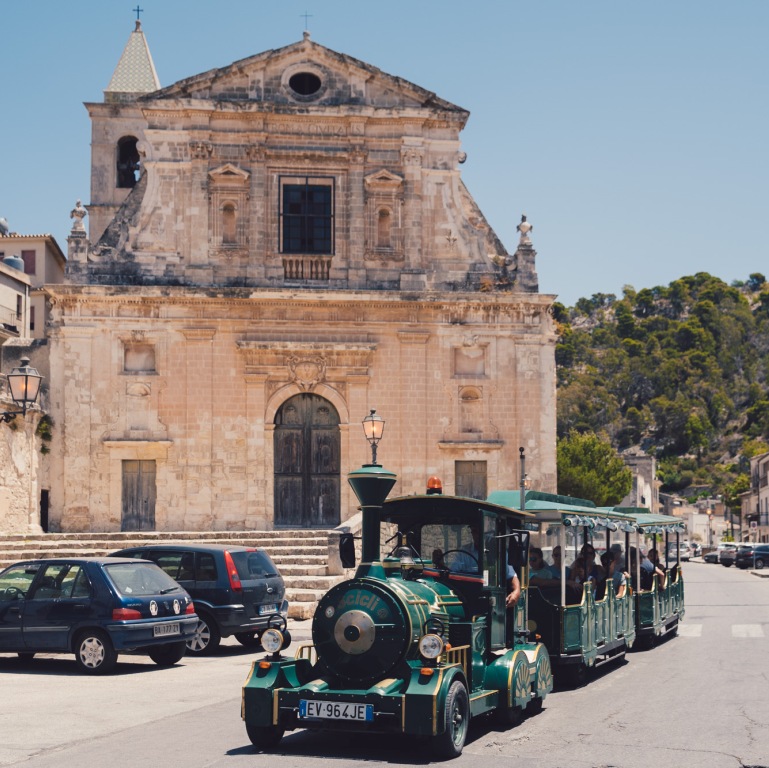
Chiesa della Consolazione
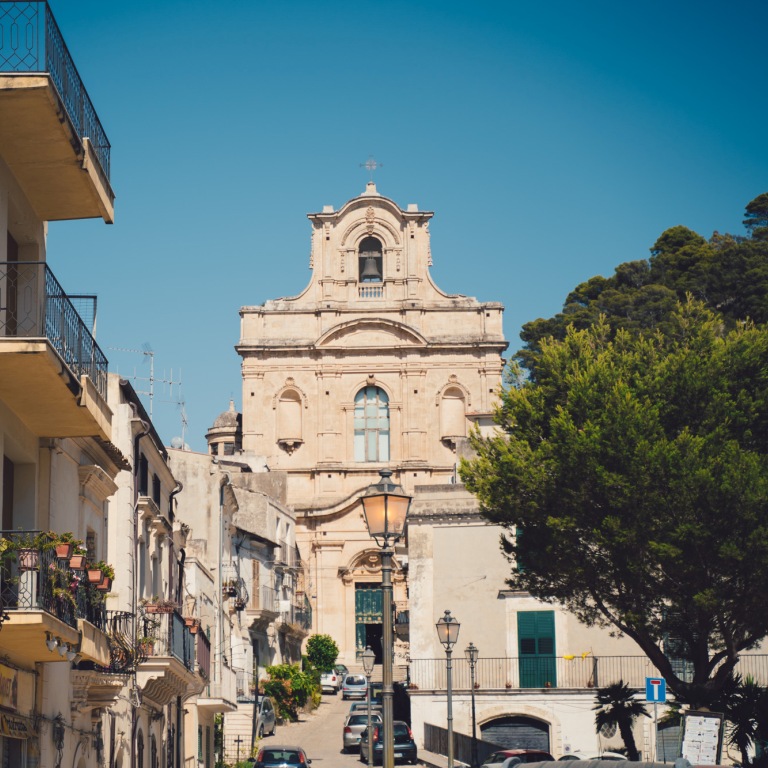
Chiesa S. Maria La Nova
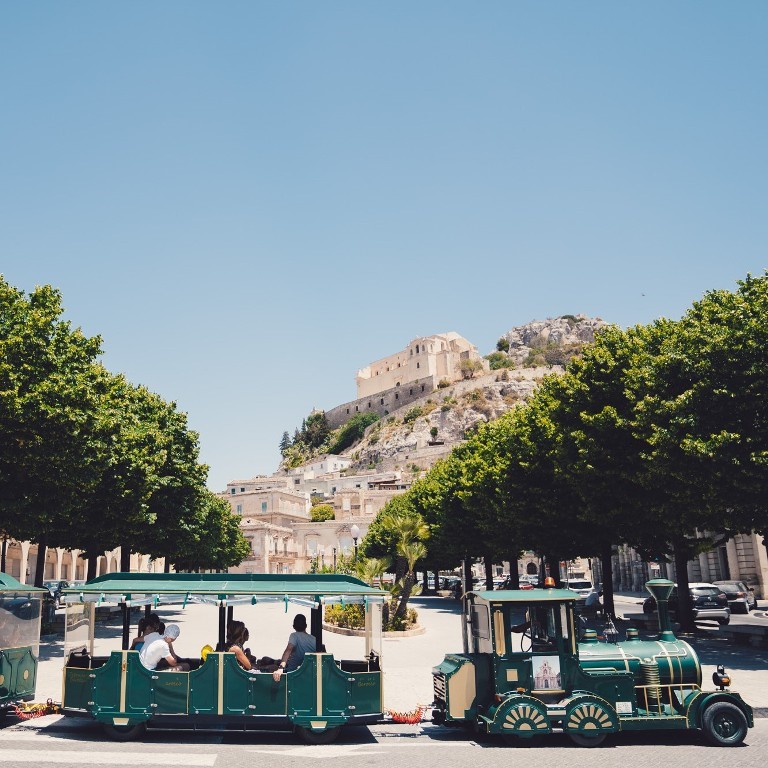
Piazza Italia
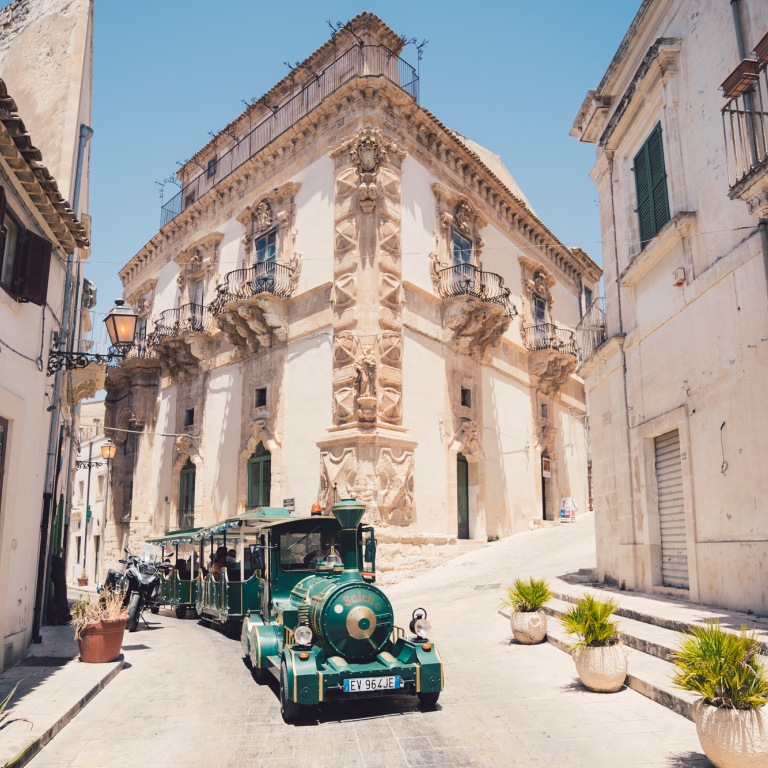
Palazzo Beneventano
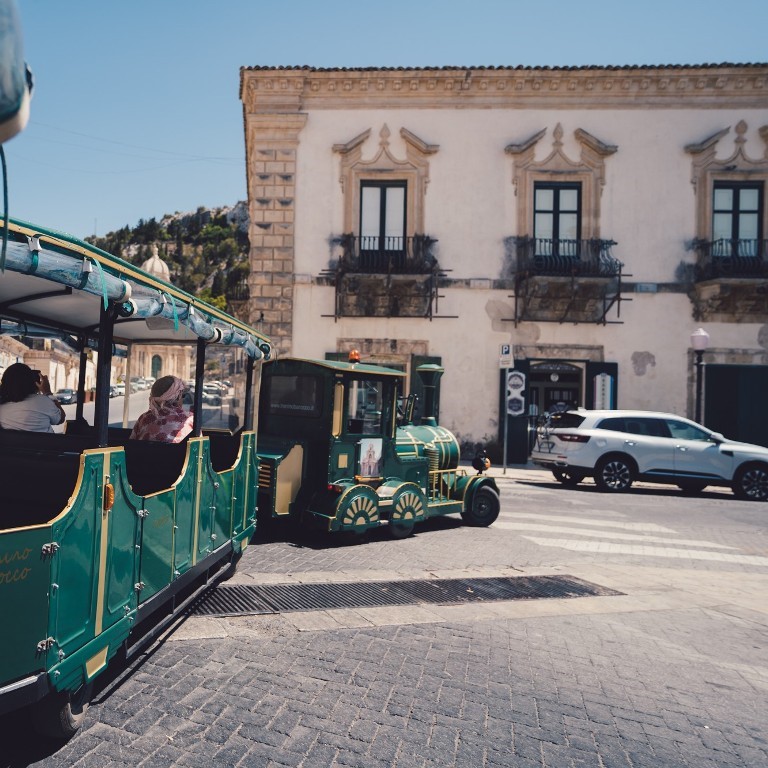
Palazzo Fava
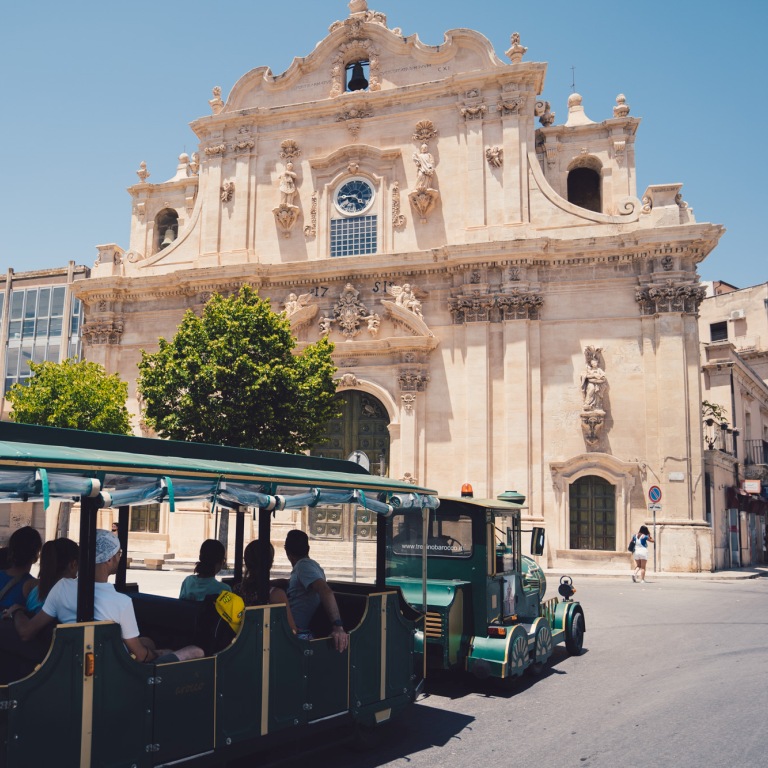
Chiesa Madre di Sant' Ignazio
